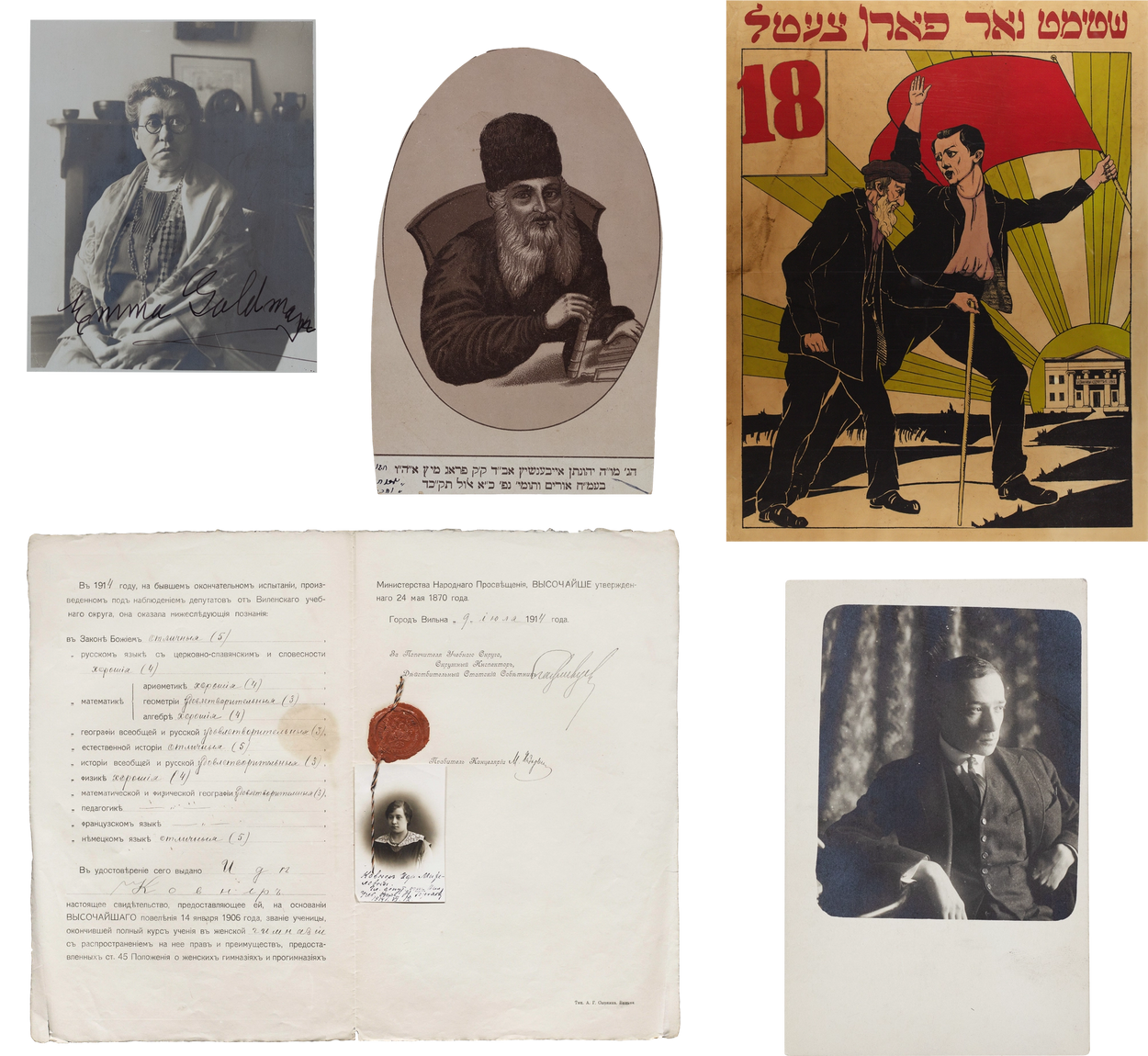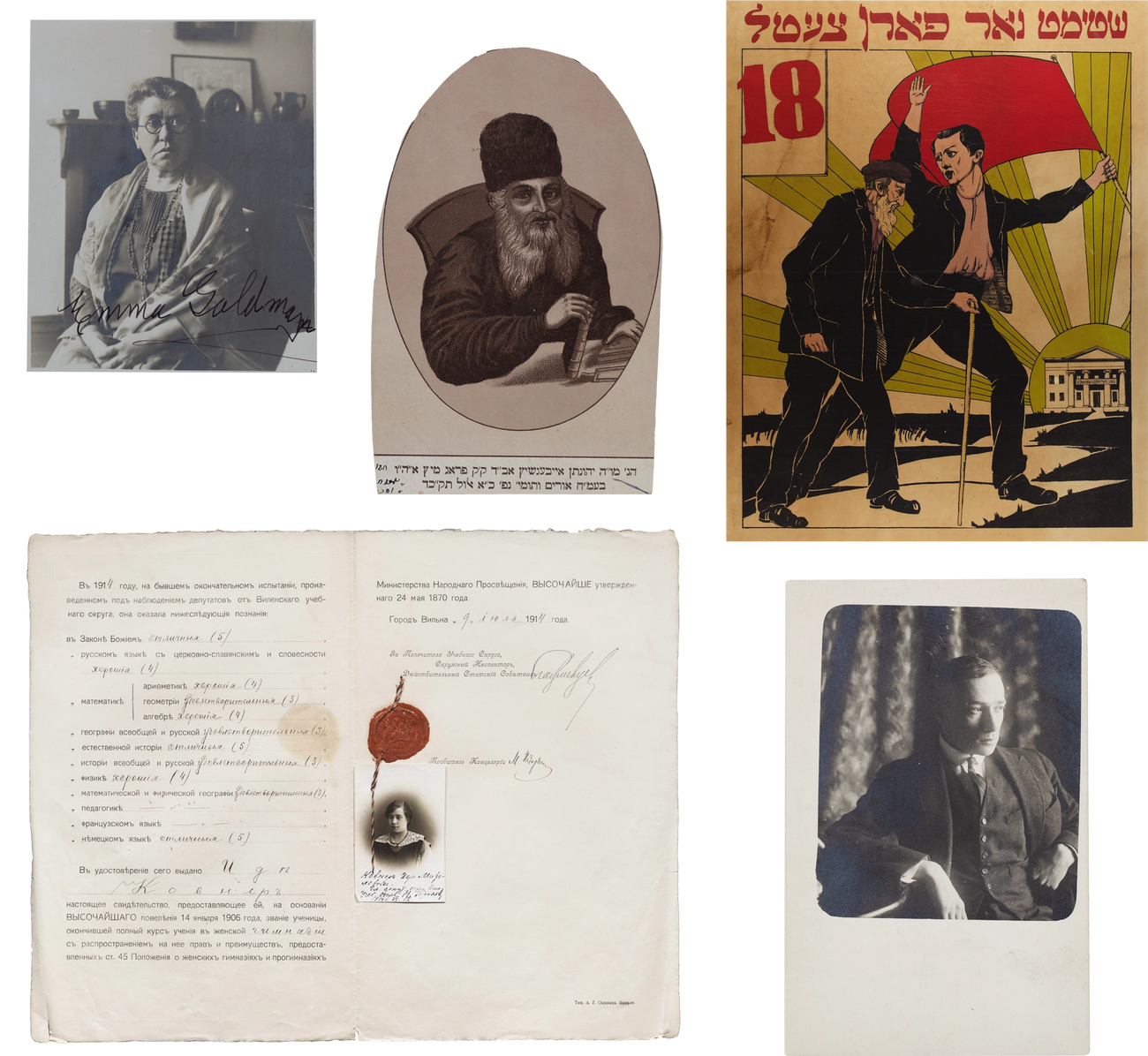Diving Into the Vilna Collections
An extraordinary trove of documents, many saved from Nazi and Soviet hands, offers revolutionary access to the Eastern European Jewish past




When I first began researching at YIVO more than 20 years ago, there was almost nothing more satisfying than engaging in the rituals of retrieval. I would begin at the wooden drawers of its card catalogs: thumbing, squinting, and copying information from tightly packed cards in Yiddish, some typed, others handwritten. Thumbing, squinting, and copying. Thumbing, squinting, and copying. Then came the completion of request forms, followed by the wait at my table in the reading room for the delivery of my boxes.
Those rituals are no longer for some of YIVO’s most significant collections. Earlier this month, the YIVO Institute completed the Edward Blank Vilna Online Collections project, the brainchild of YIVO’s director, Jonathan Brent, labored over by a team of archivists, and seen to fruition by director of the YIVO archives, Stefanie Halpern. Executed during a period of seven years at a cost of $7 million, the project was unprecedented in its complexity: because of the number of languages it spans (15), the participation of libraries on different continents (themselves operating in Yiddish, Lithuanian, and English), and the damage suffered by so many of its documents. To this, add the work of processing and digitization: document-by-document identification, scanning, and ingest, and then (as we are too used to saying these days) sprinkle in a global pandemic. With a part of her team out sick during the first days of this year, Halpern steered the project, executed quality control on several hundred documents, and fielded queries from patrons.
This digitization project rectifies the havoc that the war wrought on these documents. While some were destroyed, most were stolen by the Nazis, discovered in Germany by the U.S. military after the war, and then returned to YIVO in New York in 1947. Other documents were hidden throughout Vilna. To save them from the hands of the Nazis and then the Soviets, YIVO’s staff and its allies, including many non-Jews, had taken it upon themselves to stash them in attics, in the basements of churches, and in the ground. In his iconic poem “Vilna,” the Yiddish poet Moyshe Kulbak (1896-1937) once likened its cityscape to sacred parchments and “a dark amulet embedded in Lithuania.” These hiding places, crudely dug and hurriedly stuffed with Jewish documents, became a cruel echo of Kulbak’s poem. After the war, YIVO’s archivists named all surviving documents from the prewar Vilna archives as “the Vilna Collections.”
Kulbak’s ode to Vilna came to mind when I sifted through damaged documents in Martynas Mažvydas National Library in Vilnius in 2018, a year after yet another trove of 170,000 of such hidden documents had been discovered. As YIVO’s Vilna Collections scholar-in-residence, I was one of the first to set YIVO’s attention on these documents since they were orphaned from their collections in the 1940s. The librarian delivered them to me in asteroidlike clumps, as if they had fallen to Earth from some faraway planet. Since that trip, YIVO’s archivists have sorted and identified these materials. They will remain in Lithuania, but these documents are now reunited with their original collections in digital form, all blissfully downloadable, available to all.
The digitization project of the Vilna Collections revolutionizes our access to what East European Jewry was, and it will change our sense of the past. This will not be an overnight affair. There is no smoking gun, for instance, no star document that will shine a light on utterly undiscovered worlds. But there are many missing chapters in the story of Ashkenazi Jewry and many more chapters that lack detail and relatability and so many cultural producers that have gone unstudied. With instantaneous access to these collections, the energy of scholars, translators, performers, composers, artists, and genealogists will tell these stories with unprecedented ease. Radical access to the Vilna Collections provides an opportunity, not so much to rewrite history, but to write it in a way in which the energy of its historians is finally matched by the availability of primary sources.
And with shifts in history will come shifts in collective memory. In fact, if anything could do this, the digitization of the Vilna Collections might decisively shift Jewish memory away from its center of gravity in the six-year period of World War II, toward and throughout the hundreds of years of creativity that preceded it. The Holocaust might always be the frame through which we see East European Jewry, but what comes of digitization is sure to engage our focus.
As both an archive and a research institute from its first days in 1925, YIVO’s collections initiated the gathering of materials by zamlers (collectors) as well as published research by forshers (researchers), aspiranturs (its graduate students), and historikers (historians), beginning in the fields of folklore, social sciences, and philology. Before the war, almost all this activity was conducted in Yiddish. Recent works based on the collections are too numerous to mention. David Engel’s razor-sharp reading of interwar European political culture flows from the documents in RG 81, which chronicle the trial of Scholem Schwarzbard, the Jewish mercenary who assassinated the murderous Ukrainian politician Symon Petluria on the streets of Paris in 1926. Glenn Dynner teases out fascinating information on 19th-century Jewish tavern-keepers from kvitlekh, or petitions addressed to the miracle worker Rabbi Eliyahu Guttmacher (1815-1874). (A group of YIVO zamlers had stumbled upon these small pieces of paper in an attic in Grodzisk in 1932 and deposited them in YIVO.) In the work of Ben-Tsion Klibansky, the papers of Poland’s Central Office of the Yeshivot reveal a kind of shtetl take on crowdsourcing in which money was raised—verse by verse and even letter by letter—from thousands of Jews across several continents for a Torah scroll in the name of the Khofets Khayim Rabbi Yisroel Meir Kagan (1839-1933). Finally, the latest of Ken Krimstein’s celebrated graphic novels, When I Grow Up, is based on youth autobiographies contained in RG 4.
I confess: Even more than the mahogany card catalog, I love digitization. I love how I can zoom into difficult handwriting or, with a photograph, take a close-up look at the shape of someone’s collar or facial expression—and then I can save my documents and return to them again and again. Also, I love the immediacy. In a sense, when the charmingly earnest YIVO aspirantur Binyomin Yanovitsh writes a letter to the YIVO Institute in Vilna with an update on a questionnaire he crafted in April 1936, he also addresses me. “With this,” he begins, “I send two sample questionnaires, Questionnaire I for Schools and Questionnaire II for youth organizations.” His letter continues:
With these questions, I have explored various facets of the lives of young people that reveal what pushes them in the directions they go, which occupation, and which course of study ... What’s clear is that generalizations cannot be made, but that questions, broadly applied, can make clearer the many factors that shape the lives of our youth.”(RG 8000)
Differently but equally urgent is Sore Kuperman’s petition to Poland’s Yiddish Actors Union, dated April 20, 1931, begging for the reinstatement of her membership:
… Beloved friends: I can find no work as a professional actor as it’s been six years that I have been locked out of the union. If you can think of worse punishment than being shut out of the union then go ahead, imagine it!
These letters on my computer screen, in my home, dissolve the deep divides of time and space that stand between me and their authors. In a sense, the medium reshapes the message.
With the digitization of the Vilna Collections have come new finding aids. A finding aid is basically a list created by the archivist as she processes a collection, and it could be as stingy as a one-sentence, box-by-box description. Here, however, the archivists have supplied detailed lists of collections on a folder-to-folder basis drawing on their preternatural knowledge of YIVO and its holdings. In the archive setting, browsing is mostly forbidden: One is expected to know what one is coming to see before even walking through the doors. At home, with good Wi-Fi, and perhaps a printout of the finding aid at your elbow, digitization urges you down the rabbit holes.
The greatest obstacle to the Vilna Collections for most potential researchers is no longer physical, but linguistic: There are papers in various languages in these collections, but Yiddish has been the lingua franca of YIVO since its establishment and it was often the language of the institutions whose papers it absorbed. With their deep knowledge of Freud (Max Weinreich translated Freud’s Introductory Lectures on Psychoanalysis into Yiddish with Freud’s approval), the YIVO staff might say that to refer to Yiddish as a boundary at all is, more than anything, psychological—perhaps resistance on the part of contemporary Jewry to confronting parts of its past.
But baby steps. Getting to know the Vilna Collections from the comfort of your living room sofa might be a perfect beginning. If you know Russian, peruse czarist police reports on brothel owners, thieves, and revolutionaries; if it’s Hebrew, dig into the papers of the Tarbut School (RG 23); and if your inclination is religious, work your way from the neat hand of the Khofets Khayim to the far less legible prose of the Gaon of Vilna. Are you musical? Explore the music sheets of RG 7 or RG 37. Or browse. Limit the search by the languages you know; as I mentioned, there are 15 represented in the collections. Browse a finding aid of the Karaite collection (RG 40) or scan the theater posters in RG 8. Sit. Feast on your history.
Alyssa Quint is associate editor at Tablet Magazine and author of The Rise of the Modern Yiddish Theater.